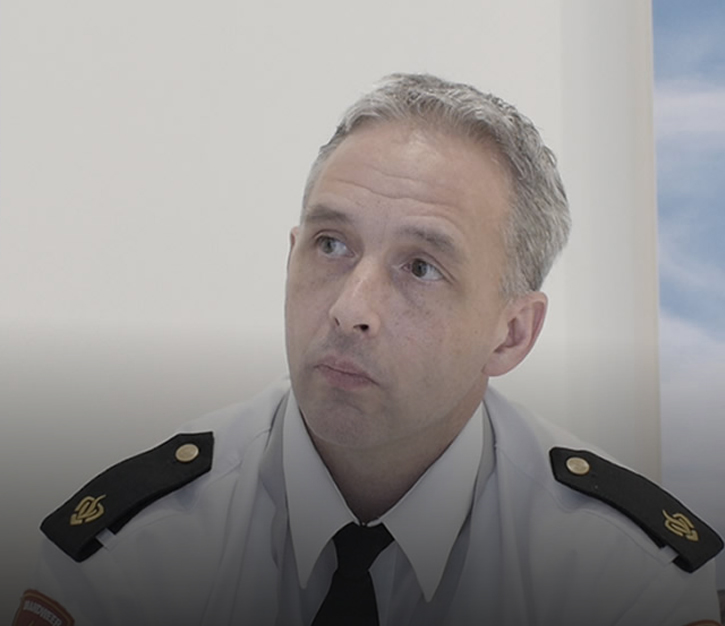Martijn Zagwijn, of the Netherlands Fire Service, believes that a small UAV carried in every fire truck could save lives. After testing the Altura Zenith unmanned aerial system for six months, Martijn says drones will influence the way the fire service operates in towns and cities. “I think they will change the way we operate and have a big impact on the fire department.

“In the future, you could have a small UAV in every fire truck. The first truck on the scene could assess the fire with the small UAV and find out what’s needed. Based on that you could then call in a specialist team.”
The Netherlands fire service has been testing the Altura Zenith drone in a controlled environment with positive results, unlike in San Diego County where rogue hobbyists are interfering with firefighting efforts and being threatened with fines and prison sentences of up to five years. The irony is that firefighters are increasingly using drones to examine the spread of fires and how to contain them.
Martijn said: “We are using drones to get an early assessment of a disaster. That drones help us plan to take control of the fire. We have also created a training programme for when we use them in the field.
“It’s potentially a very important development. It’s not just the system, it’s the type of sensors you use. With the drone, you can get an immediate analysis of the heat intensity. A system that you can trust is very important, so we have to get familiar with it operationally.”
The fire department experiments with different sensors and uses infrared camera footage. “We also did some experiments with a sensor that can smell toxic materials in a hazardous environment,” he says.
“Drones allow you to see things clearly without putting lives at risk. Whether it is a residential building or a complex industrial plant, you can always see a fire but often you lack sufficient information. A drone can give you more information on what to expect.”
With more information and a better overview, the fire and rescue staff can make a tactical plan thereby improving the safety of fire crews.
Martijn said: “One of the most important requirements from a UAV system is reliability. Furthermore, in life or death situations, quick results are vital. This system could help us save lives because we can formulate our attack plan faster.”
The Dutch fire service could operate a network of small UAVs. “It’s an important development and we may use the systems nationwide in the future,” Martijn said. This, of course, has implications for use on a wider scale in many countries.
“With further development, especially in cities where their use is currently restricted, drones may be deployed to help extinguish fires. You could also use them in rescue scenarios hovering over the water if people have fallen into a river. They are quick and easy to set up.”
What would be his ultimate small UAV system, having tested the Altura Zenith? “The flight time of the Altura Zenith is good. I would like to see a hybrid system that combines speed and endurance with maybe one or two hours in the air.”
Martijn believes drones are here to stay. Using them in certain situations would certainly save on helicopter fuel, he says. “You could also have several systems on the fire truck. You may even be able to operate a very small UAV in a building with sensors so it can check for people by scanning for body heat, even seeing through the smoke. They are an extra pair of eyes for us.”
Latest articles
NEWS - 22-03-2018
Phase One Industrial and Aerialtronics sign partnership agreement
NEWS - 08-02-2018
AERIALTRONICS releases the new PENSAR
NEWS - 05-10-2017
Drone Volt is enhancing its expertise by buying up Aerialtronics' assets
NEWS - 18-08-2017
Aerialtronics is looking for partners and investors
BLOG - 15-08-2017
Aerialtronics’ commitment to drone data security
NEWS - 05-07-2017
Limburg police and fire services deploy the Altura Zenith drone for duty
NEWS - 19-06-2017
Aerialtronics announces PENSAR, World’s first dual spectrum computer vision platform
NEWS - 19-06-2017
Plowman Craven rail surveys
BLOG - 22-06-2017
Liandon implements Aerialtronics technology for utility inspection
NEWS - 08-05-2017
Aerialtronics and RAE Systems BeNeLux team up to develop revolutionary hazmat detection systems
NEWS - 23-03-2017
Aerialtronics Takes to Skies at Launch of IBM’s Center
NEWS - 04-10-2016
Aerialtronics drones give IBM Watson IoT a bird' eye view
NEWS - 01-02-2016
Aerialtronics adds sense and avoid technology to Zenith UAS